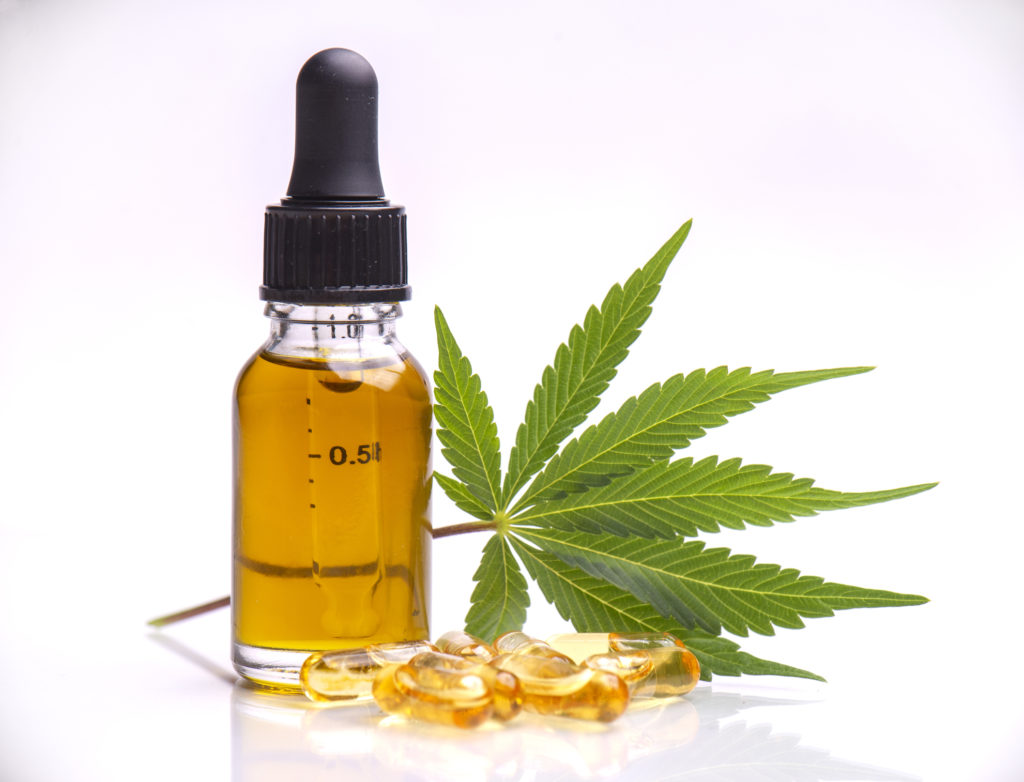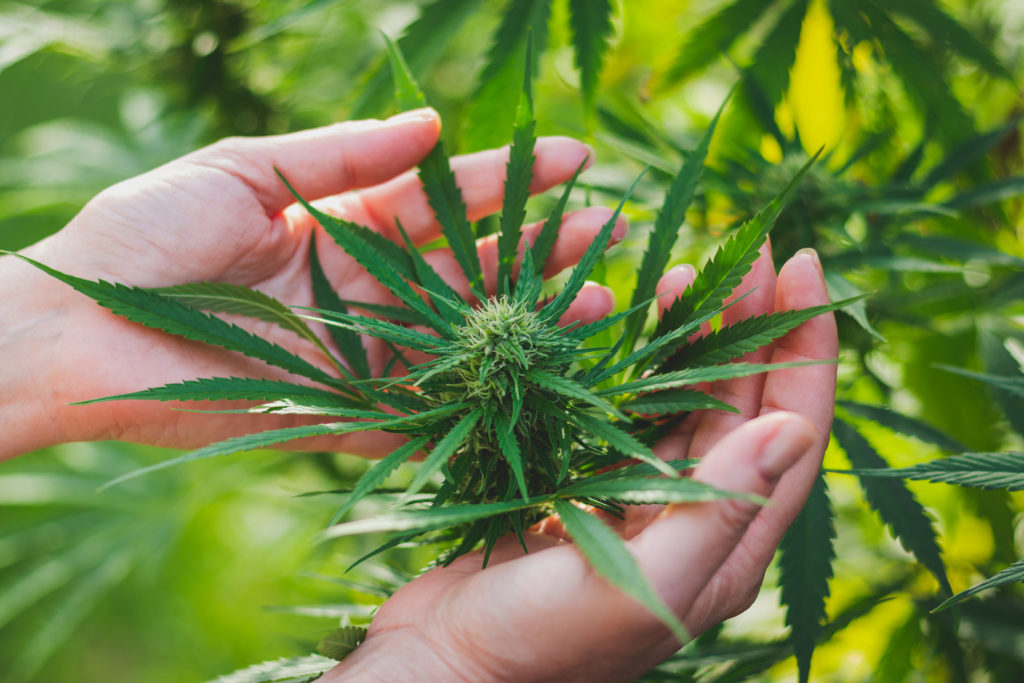Check out what’s new in food allergy research, learn about the peanut oral immunotherapy drug that just received U.S. approval, check out the 5 things to know about cannabis allergy, find out about the new bill in Alberta to support students with food allergy, plus, check out our latest mythbuster on food sensitivity testing.
Research: Peanut oral immunotherapy drug receives approval in the U.S.
![PALFORZIA™ [Peanut (Arachis hypogaea) Allergen Powder-dnfp] Capsules](http://foodallergycanada.ca/wp-content/uploads/Aimmune_PALFORZIA_Capsule_Image_FDA_Approval_1-1024x401.jpg)
Aimmune Therapeutics, Inc., a biopharmaceutical company developing treatments for food allergy, announced the approval of PALFORZIA™ by the U.S. Food and Drug Administration (FDA) last week, making it the first approved treatment for patients with peanut allergy.
PALFORZIA is a biologic drug for peanut oral immunotherapy (OIT) for children 4-17 years of age. With OIT, small amounts of the allergen are given by mouth in gradually increasing doses until the patient is able to eat a certain amount of it without having a reaction so long as they are on this treatment.
Is OIT right for you?
It’s important to note that OIT is not a cure, it is a therapy that helps to desensitize individuals so they can eat more of their allergen without having a significant reaction. Individuals are still allergic to their allergen and must continue to carry their epinephrine auto-injector with them.
For some individuals and families, OIT is extremely meaningful and provides them with a significantly improved quality of life because it lessens the burden, or fear of, having a severe allergic reaction to an accidental exposure. Others prefer to continue with a complete avoidance strategy for allergy management.
If you are wondering if OIT is right for you and your family, check out our therapies page which includes top 10 questions to ask your allergist, along with a webinar with Dr. Julia Upton on the pros and cons of OIT.
What does the FDA approved therapy mean for Canadians?
Although it may not be suitable for everyone, OIT gives hope and empowers the community by providing an alternative to managing food allergy beyond just strict avoidance alone – it gives the community a tool to mitigate the risks of severe allergic reactions in case of accidental exposures.
The FDA approved therapy is an important first step to advancing the conversations and accelerating the possibility of therapies here in Canada. In the National Food Allergy Action Plan, the development and access to therapy options is one of the areas we are advocating for on your behalf. This includes advocating for treatment options beyond OIT to give you more choices in how to approach managing food allergy, while research for a cure continues.
As a part of this advocacy, we are following up with Aimmune to better understand their plans for the Canadian market. Stay tuned!
Tell us what you think!
Complete our short survey to give us your thoughts on this news. What does it mean to you and your family? Is OIT something you would consider as an option?
Please take a few minutes to share your thoughts with us.
Research: 5 things to know about cannabis allergy

With the legalization of cannabis in Canada and its use for medicinal purposes, there is increasing interest in the potential for cannabis allergy and the cases that have been reported. Find out more about this newer allergen in our interview with Dr. Gordon Sussman, a Toronto-based allergist and immunologist who has experience in cannabis allergy.
1. What exactly is cannabis?
Cannabis is a plant, where different varieties are grown for hemp, marijuana and hashish. The various products that come from the plant are broadly referred to as “cannabis” and they are used for industrial, medicinal or recreational purposes.

Hemp is used in a wide range of products including clothing, construction materials and more. Hemp seeds are a protein-rich superfood promoted for general good health. The variety of cannabis cultivated for hemp has very low amounts (0.3% or less) of tetrahydrocannabinol (THC), a chemical substance or cannabinoid that produces mind-altering effects or “highs” in people.
The cannabis plants that are sources for marijuana and hashish contain higher amounts of THC. Marijuana is made from plant flowers and leaves while hashish is composed of plant resin. Both can be smoked, vaporized, or eaten, and hashish usually contains a higher concentration of THC than marijuana.
Cannabis plants also contain cannabidiol (CBD), a non-intoxicating cannabinoid used in oils and other products to create a feeling of calmness.
2. What is cannabis allergy?
You can develop an allergy or sensitization to cannabis after exposure to the plant. There are different routes of exposure such as smoking, touching, or eating parts of the plant. The male cannabis plants typically flower and produce pollen, so there is also the possibility of inhaling its pollen in the air. Occupational exposure by those involved in the growing and harvesting of cannabis has also been reported. The allergenic potential of CBD oil is not yet known and more research is needed.
A US study looked at the exposure to marijuana and types of reactions in patients in Colorado, the first state to legalize recreational marijuana. Results showed that 21% of patients (28/132 people) experienced symptoms, including 12% who never smoked marijuana but were exposed to it, 26% who have smoked it in the past, and 50% who are regular smokers. This research suggests that cannabis may be a mild allergen for most people, however, greater exposure and regular use result in more symptoms in patients.
European studies have reported that lipid transfer proteins (LTPs) in cannabis can cause cross-reactivity with other foods. For example, foods with proteins that are similar to marijuana proteins may cause an allergic reaction in people with a marijuana allergy. These foods include almonds, apples, bananas, hazelnuts, peaches, tomatoes and others. More research is needed to determine the relevance for North America.
3. What are the symptoms?

The symptoms of cannabis allergy vary depending on the route of exposure, and we found this in a Canadian study in which I was involved. Breathing or inhaling pollen and smoke exposure can cause an itchy or runny nose, congestion, sneezing, itchy or watery eyes. People who live in areas where large quantities of cannabis plants are cultivated may be more likely to experience allergic reactions to the pollen. Touching or handling plants can produce hives, itchiness or swelling whereas eating parts of the plant can lead to abdominal pain and vomiting. Symptoms can be mild, and less commonly progress to potentially life-threatening allergic reactions. If an anaphylactic reaction is suspected, it should be treated promptly with epinephrine (e.g. EpiPen®).
Anaphylaxis has primarily occurred in sensitized patients who have ingested hemp seeds. These are patients who have had an initial exposure to hemp seeds and the re-exposure to it has resulted in a severe allergic reaction. Due to this risk, I prescribe epinephrine auto-injectors for patients with hemp seed allergy.
4. How is it diagnosed, and is there a treatment?
If you think you have a cannabis allergy, it is important to see an allergist. They will ask about your medical history and perform a skin prick test. There isn’t a standardized test for cannabis allergy as of yet, but your allergist can prepare a mixture of plant buds, leaves or flowers for testing.
Currently, there is no treatment available for cannabis allergy. Due to the lack of treatment options, you should avoid smoking, eating or touching the plant to avoid symptoms. This can be challenging if you are experiencing an airborne exposure that you cannot control. Some people take antihistamines or decongestants to manage symptoms, but this should be discussed with a doctor. In general, complete avoidance is the only way to prevent an allergic reaction to cannabis. More research is needed, but immunotherapy may be an option in the future.
5. What should we keep in mind about cannabis allergy?
Increased awareness and vigilance are important for recognizing this new allergen. Given Canada’s legalization of cannabis for recreational use, there will likely be more exposure to the drug by the general public, and ultimately, more reported cases of cannabis allergy. This trend has happened in other places that have legalized marijuana, like the state of Colorado in the US.
Thank you Dr. Sussman for covering the basics of cannabis allergy, including the range and severity of symptoms that can present.
Learn more about drugs and food allergy on our tips pages for parents and teens and young adults.
Research: CHILD Cohort Study video wins award
What is the CHILD Cohort Study?

The CHILD Cohort Study is a prospective longitudinal birth cohort study. This means that researchers are actively following the study participants over time as they grow and develop—from mid-pregnancy into childhood and adolescence.
CHILD findings will influence medical practice, parenting choices, consumer product regulation and policy development. Food Allergy Canada is a part of the CHILD knowledge mobilization stakeholder advisory committee. We are interested in the potential of this data to drive useful insights on the development of food allergy.
Winning 2nd place in the video competition!
Last year, we asked you to vote for the animated video, The CHILD Cohort Study and a Baby’s Microbiome, which was entered into the 2019 CIHR Institute of Human Development, Child and Youth Health (IHDCYH) Talks video competition. This competition reviews top Canadian videos with evidence-based messages focused on having a positive impact on the health of children, youth and families.
The video takes viewers on a journey into the world of a baby’s gut microbiome. It shares CHILD research discoveries that are helping us to understand allergies, asthma, obesity and everyday health and well being – especially during childhood.
Congratulations to the CHILD Cohort Study team for winning 2nd place in this competition, and thank you to all who voted for this video and encouraged others to do the same.
Advocacy: Alberta’s new bill to support students with food allergy

On January 1, 2020, the Alberta Bill 201 went into effect. This new act incorporates key strategies for maintaining schools as safe and welcoming places for students with food allergy.
Publicly funded schools in Alberta are now required to create an anaphylaxis policy that includes:
- Strategies to reduce the risk for all students with potentially life-threatening allergies
- A communication plan for the school community
- Mandatory training for school staff
- Identifying students with life-threatening allergies and keeping information about their allergies
- Stock epinephrine – an epinephrine auto-injector (e.g. EpiPen®) not prescribed to a specific individual and can be used in an emergency

Thank you MLA Ms. Jackie Armstrong-Homeniuk for championing Bill 201, and a special thanks to those of you in Alberta who reached out to your MLA to foster support of the bill.
If you’re in Alberta, let us know how Bill 201 has changed the management of food allergy at your school. Email us at info@foodallergycanada.ca.
Learn more about the school policies across each province.
Mythbuster – Are food sensitivity tests (IgG tests) helpful for diagnosing a food allergy?

FACT: Research does not support IgG testing for food allergy. These tests measure levels of IgG (immunoglobulin G) antibodies to foods and claim that removing foods with high levels from the diet can address symptoms and improve health. However, the presence of IgG antibodies indicate exposure and possibly tolerance to a food, not allergy. Due to a lack of evidence supporting their use, IgG tests are not recommended for diagnosing a food allergy, or even a food intolerance or sensitivity.
Many labs from across Canada offer food sensitivity testing, beware of these types of testing as they are not helpful. Read the CSACI’s position statement on IgG testing.
Bottom line: Skin and/or blood tests, along with a convincing medical history, are needed to make a diagnosis of food allergy. If you think that you or someone in your family has a food allergy, it is important to see a doctor. Your doctor can refer you to an allergist for appropriate testing and interpretation of test results.
Learn more about the diagnosis of food allergy from our topic sheet. Not sure if you have a food allergy, check out AllergyCheck.ca – a free online tool that helps you better understand if your symptoms are caused by food allergy and if you need to seek further advice from an allergist.
Help us educate your communities and share this Mythbuster with them! Find more mythbusters at foodallergycanada.ca/mythbusters.
Medical content reviewed by Dr. Julia Upton, MD, FRCPC, MPH.
Tags: advocacy, Research